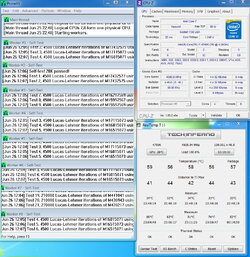Yes, that is what I pulled my information from (except from our review on the front page).
As you should clearly be able to read, there is a new TIM, and additional capacitors as I said already.
The 'packaging' is referring to the PCB and caps, while the thermals is the new TIM.
As you should clearly be able to read, there is a new TIM, and additional capacitors as I said already.
The 'packaging' is referring to the PCB and caps, while the thermals is the new TIM.

